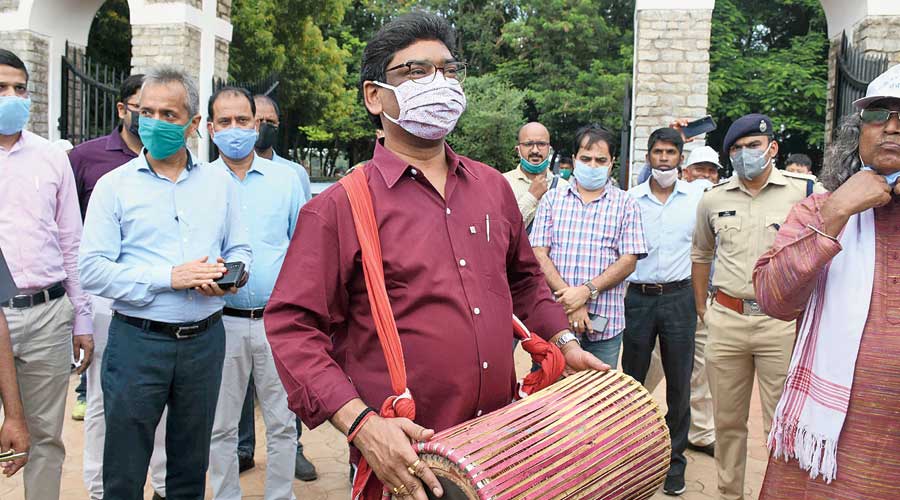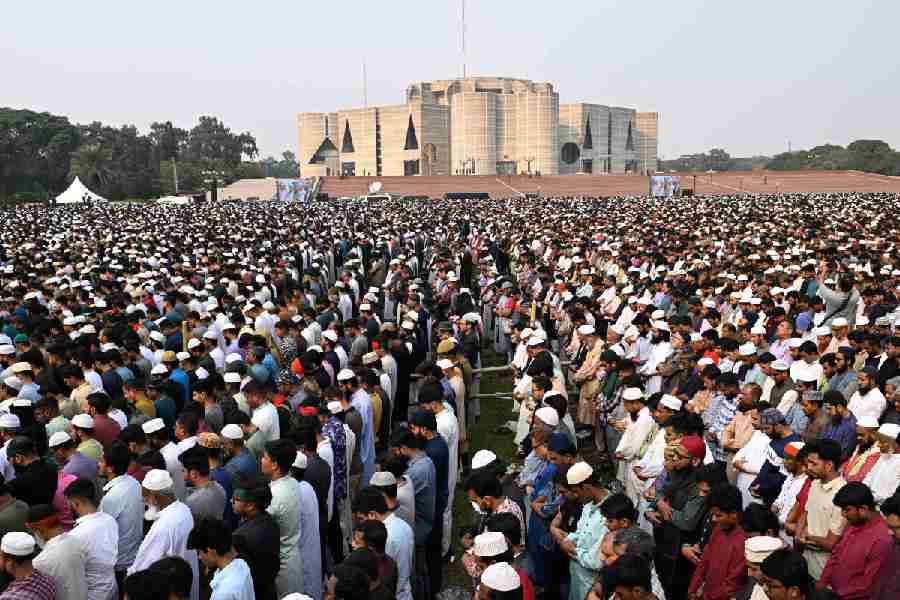The International Day of the World’s Indigenous Peoples was a low-key affair in Ranchi this year because of the restrictions imposed in view of the Covid-19 pandemic.
“The state government decided that the World Tribal Day (as the day is also known as) will be a state holiday every year,” chief minister Hemant Soren declared.
But since the day fell on a Sunday, people did not get a separate holiday.
The theme of the World Tribal Day this year was Covid-19 and the indigenous peoples’ resilience, with focus on preservation and promotion of their traditional knowledge and practices.
“The Constitution gave certain rights to the tribals but it is time to assess the achievements made since Independence,” Soren said in a video message to the people.
“The pandemic has changed the world and the tribals must remain united and resolve how to go forward in this fast-moving, competitive world with focus on education,” he added.
Despite restrictions, a few small groups came out on the streets to mark the day.
Some activists like Prabhakar Tirkey and Ratan Tirkey who took active part in the movement for a separate Jharkhand state led one such small group at Albert Ekka Chowk.
The state unit of the Congress also organised a small gathering at Bapu Vatika at Morabadi where the party followers led by state unit president and finance minister Rameshwar Oraon observed both the tribal day and August Kranti Divas that commemorates Quit India Movement.
Soren also went to Morabadi to attend another small function where he paid floral tribute before the statues of tribal freedom fighter brothers, Nilambar and Pitambar and also planted saplings.
“I planted saplings of saal and karam with the hope that the trees would help us live in harmony with the nature as those did for centuries,” he said there.
Jharkhand is often described as a tribal dominated state that is inhabited by 32 different scheduled tribes, including 9 belonging to particularly vulnerable tribal groups.
According to the 2011 census, there were 86.5 lakh tribals residing in Jharkhand who constituted 26.2 per cent of the state’s population.
Among the tribals, the Santhals were the largest group with 31.9 per cent of the total tribal population, followed by the Oraons (19.9%), the Mundas (14.2%) and the Hos (10.7%).










